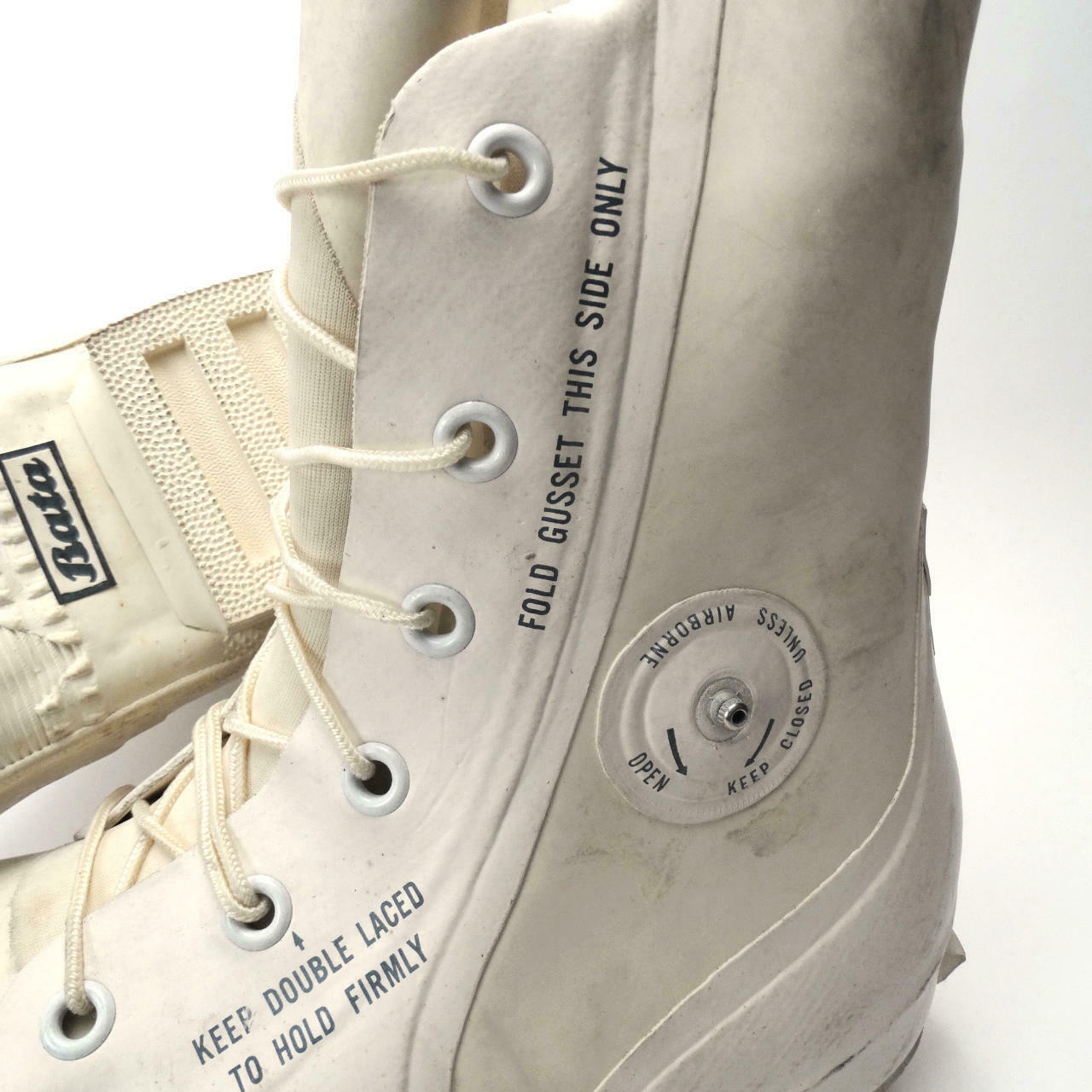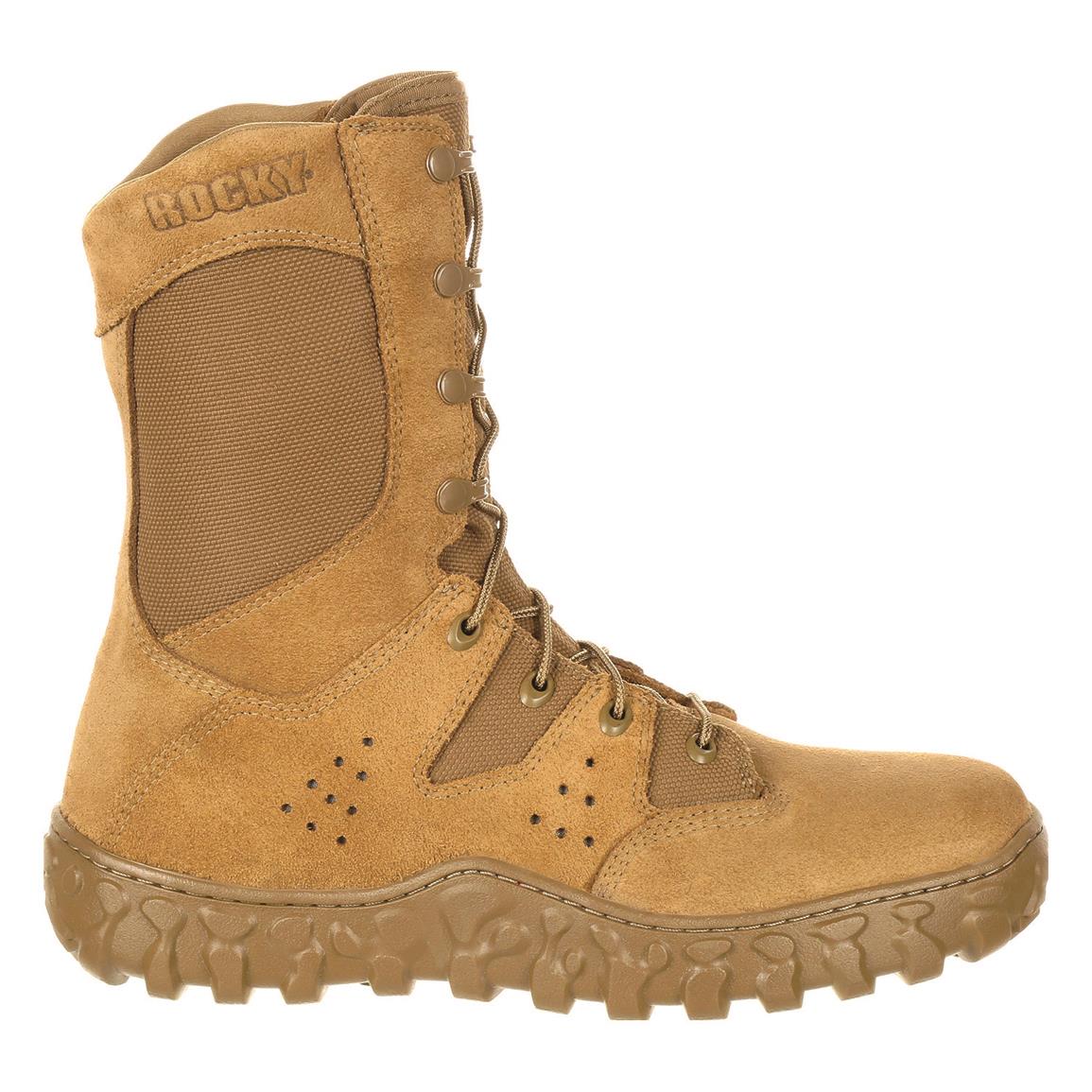Military Bunny Boot - This article has many questions. Please help improve it or discuss these issues on the talk page. (Learn how and who to remove these template messages)
This article contains buzzwords: vague phrases often accompanied by biased or unverifiable information. Such statements should be clarified or removed. (January 2009)
Military Bunny Boot

This article requires additional citation for verification. Please help improve this article by adding references to reliable sources. Unsourced content can be challenged and removed. Find Inspiration in Bunny Boots" – News · Newspapers · Books · Scholar · JSTOR (October 2012 ) (Learn how and from whom to remove this template message)
Surplus Bunny Boots Ecw
This article may contain original research. Please improve it by checking the claims made and adding an inline reference. Statements that are nothing more than basic research should be removed. (January 2009 ) (Learn how and who to remove this template message)
Bunny boots or Mickey Mouse boots (depending on the version) are the most common nicknames for extreme cold wind barrier boots (Types I and II) used by the United States Armed Forces. These large, bulbous, waterproof rubber boots can be worn in extremely cold weather, from −20 to −60°F (−29 to −51°C), and the liner-free interior retains warmth through its sandwich of up to an inch of wool. and felt insulated between two layers of vacuum-tight rubber; This vacuum layer insulates a person's feet like a vacuum flask.
These boots were originally developed at the Naval Apparel and Textile Research Center in Natick, Massachusetts for use during the Korean War.
Originally designed for military expeditions in extremely cold weather during the Korean War (originally defined as −35°F (−37°C) by the National Weather Service), ECVB boots are rated from -20°F to -60°F (depending on type) and many military The surplus was sold to civilians.
Just Completed My First Build, Proud Of My Minidox! Bunny Boot For Scale.
Because of their warmth and low price, these boots are a staple outfit for very cold weather in civilian work and recreation. Bunny boots are common in arctic climates like Alaska.
US Army military bunny boots had leather uppers with two buckles, soles and stiff leather soles that were very slippery on ice and snow. They came with felt boot liners.
The black pair, known as Mickey Mouse shoes (due to their size resemblance to the feet of the mouse of the same name), weighed 44 ounces. (1.25 kg) each, they are rated for temperatures of −20 °F (−28.9 °C) and are made of oil/diesel resistant rubber.

The white "Bunny Boot" is an improved version of the Type I "Mickey Mouse Boot", designed for use in more extreme cold weather and rated all the way down to −65 °F (−54 °C). Due to the suffering of soldiers fighting in the Battle of Chosin Reservoir in Korea, which in many cases resulted in frostbite, with the EV Type I boots, the Type II was created to compass the need for a "scareo worst case". Very cold conditions i. Any military force can reasonably attempt to conduct operations (including Alaska, Siberia and both Arctic Poles). By comparison, the average winter temperature at the South Pole of Antarctica is about −56°F (−49°C). The boot is slightly larger and heavier (~8 oz. (0.22 kg) more per boot) than the Type I Black due to the extra insulation. Several companies make these shoes, including Bata, Acton, and Air Boss.
New 8w Bunny Boots Military Extreme Cold Snow Boots Waterproof Muck Nib
Both Mickey Mouse and Bunny shoes have an air valve in each shoe. These air valves must be operated before flight to ensure that the air pressure between the boot walls and outside air does not rupture the boots.
The cold weather shoe is nicknamed after the snowshoe hare commonly found near Fort Greeley, Alaska. During autumn the rabbit's fur changes from brown to white, allowing it to go into winter. As winter approaches, more and more rabbits are seen with their new white "boots".
Both Mickey Mouse and Bunny shoes have rubber wedges in the forefoot and back of the heel. These wedges lock into military-grade ski and snowshoe bindings. Bunny boots are extreme temperature boots that keep your feet warm down to -60°F in cold, dry weather during snow or ice. They are hunting, shoveling snow, ice fishing, shoveling snow, working in the oil fields, whatever you do in the cold drilling. You will appreciate them especially when you don't move much. These Miner and Bata Rabbit boots are in used condition and show signs of age and use. Limited quantities. Please call or email if ordering more than 1 to check inventory availability.
Not even our US troops who call rabbit boots by their official name of 'Extreme Cold Vapor Barrier Boots (Type II)'. Their cousins, the black Mickey Mouse boots of the same name, are 'Type I' for less cold conditions. How original is our military! Designed both Naval Clothing and Textile Research Center (Natick, MA) for use during the Korean War.
The Army Wants To Replace The 'mickey Mouse' Cold Weather Boots
Now no good startup has to put up with such a name! Snowshoe hair is common around Alaska's Fort Greeley Army Post. The fur turns brown and white in winter to blend in with the snow and it has large furry 'snowy' hind legs. So the soldiers named their ultra-hot cloghoppers 'Bunny Boots'!
There is all sorts of confusion about these shutters. Ignore them unless you plan to take them on the plane. This is the only time you should open the air valves to ensure that air pressure does not break between the boot and the sealed rubber walls that insulate the outside air. The mystery is solved. If you want to keep them warm — and we hope you do — keep them covered.
Rabbit boots are only available in full men's sizes and run large. So we recommend that men order half a size smaller than their usual size and women two sizes smaller. We usually have a good selection in sizes 5 to 15. Minor and Bata Bunny boots in size 12 and size 11 are hard to come by so sometimes they sell out before we can even list them on our website. It's the same story with hard to find bunny shoes in extra narrow, narrow or extra wide. So be sure to call us if you need an amount not shown because it may have just arrived and this is your luck!

In addition to the reviews on our site, a great review of Bull Moose Patrol's Scott Oath Bunny Boots is worth a read. Our favorite piece:
Year Old Extreme Cold Weather Combat Boots
“Why Bunny Boots? Simply put: I've never had cold feet in them. There are other types of winter footwear I can wear depending on conditions and activity...but if it's zero and I know I'll be stable for a long time, bunny boots are my go-to plan. "In collaboration with artist Sterling Ruby for the FW 14 collection, Raf Simons brought back these boots. It's a military shoe worn by models on the runway. Some are vintage originals and others are inspired versions in collaboration with Adidas.
This boot was created by the American Army during the Korean War in the 50s and is designed to withstand temperatures as low as -65 °F. The nickname "Bunny" comes from the shape and color of the shoes, which resemble rabbit's feet. There is also a black version known as "The Mickey's" or "Mouse", with thicker rubber that can withstand temperatures as low as -20 °F and is also made for other types of terrain.
This shoe has three technical details: a vapor barrier with valves, insulating materials and a large toe box that prevents pressure and sweat on the feet. They have instructions for use printed on the shoe.
In 2017 adidas released a version of the ozweego model inspired by these boots in white and black base colors. These shoes also had original military features with modified guide details.
Vintage 1960 Military Snow Boots Mens 7xn Womens 8.5n Mickey Mouse Bunny Boots
We give you some videos below; One is the FW14 Raf Simons show where this shoe was featured and the other is a fashion review about them.
Post A Comment:
0 comments so far,add yours